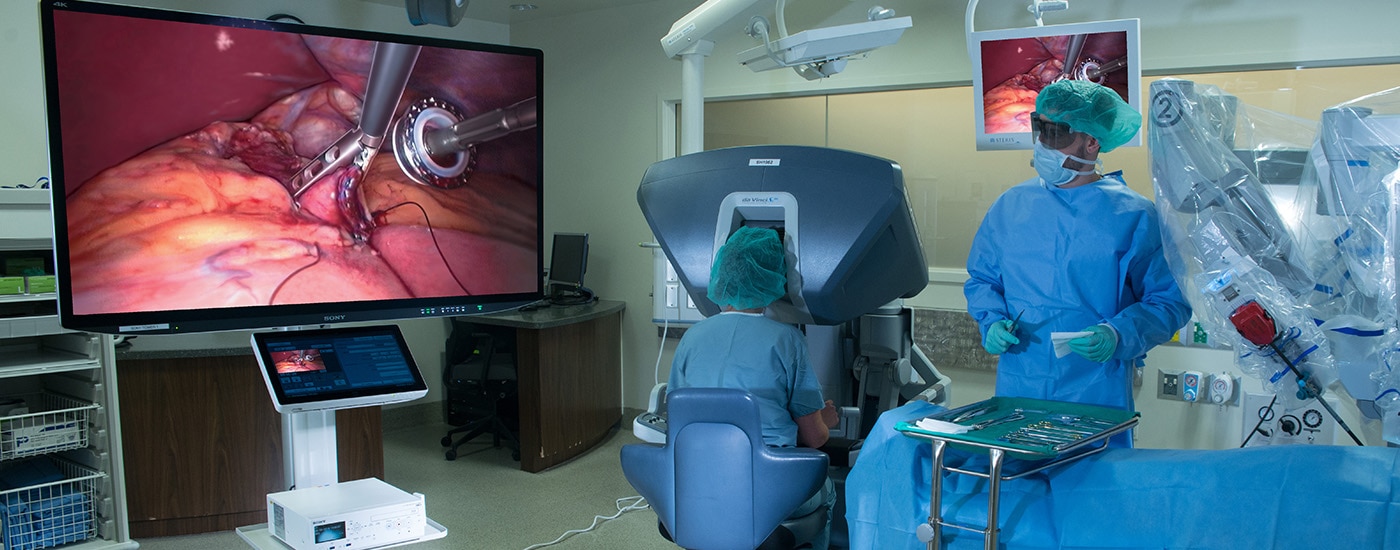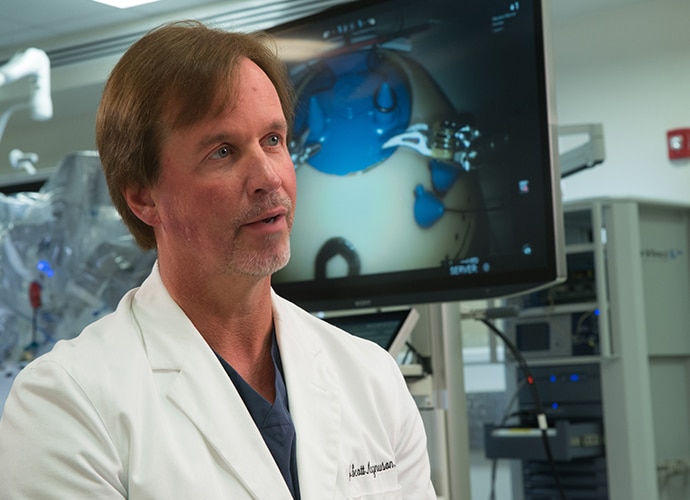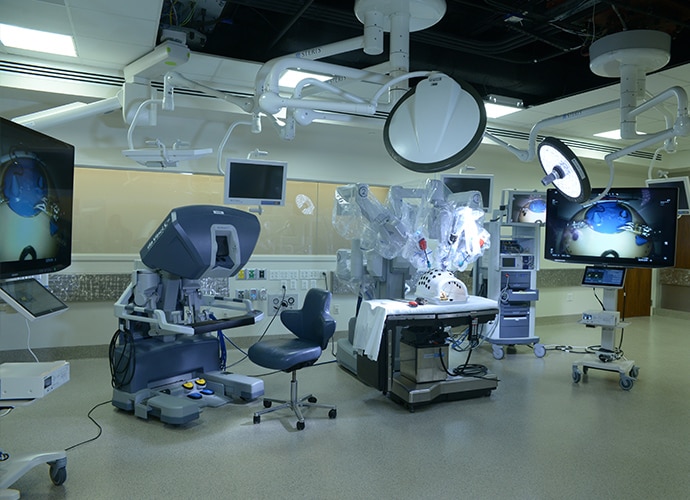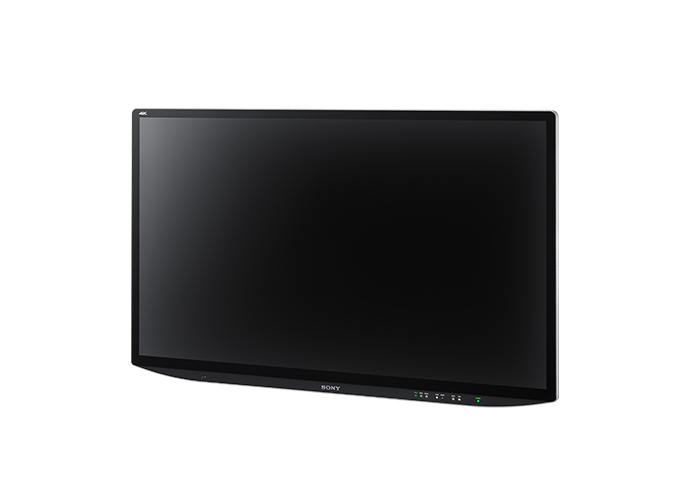
4K 3D imaging solution enhances medical education at Nicholson center
The Nicholson Center in Florida is one of the country’s leading robotic training center and one of only 93 educational institutes to receive accreditation from the American College of Surgeons by continually implementing the most advanced medical technology, allowing them to deliver an unmatched educational and training experience.
As a leader in using new technology for training, as well as a leader in the development of new technology for the healthcare field, it is critical for the Nicholson Center to have the most current products for training and education, which provides them with a competitive advantage and increased retention and visitation.
Using our LMD-X550MT 4K 3D monitor and HVO-3300MT 3D recorder provide more immersive and educational programs, as well as increased visualisation and enhanced depth perception, with the ability to record procedures for future reference and to use as a training tool.
The Nicholson Center noted that providing the OR team with the same view that the surgeon is seeing has resulted in time savings, costs savings, improved accuracy, and has led to enhanced instruction and education – all while making good on the Nicholson Center’s mission to offer products, knowledge and experiences that differentiate them from the competition.
Contact us for more information
These new 4K 3D monitors present images that resemble the real field. The depth perception and clarity give me an experience that is exactly the same as if I were looking through a microscope or a robotic console. This allows me to give better narration and instruction to the surgeon, because I can see what they are doing.
Scott Magnuson
MD, Chief Medical Officer, Nicholson Center

Immersive, educational programs
To keep medical students and surgeons up-to-date on the latest techniques, the Celebration, Florida-based medical organisation recently installed our 55-inch 4K 3D medical displays, LMD-X550MT, and 3D video recorders, HVO-3300MT, to enhance their visualisation and robotics capabilities and provide more immersive and educational programs.
“We are looked upon as a leader in using new technology for training, as well as a leader in the development of new technology for the healthcare field,” said Scott Magnuson, MD, Chief Medical Officer at the Nicholson Center. “It is critical to have the most current technology in order to maintain our standards.”
3D visualisation
The 4K 3D monitors combine 3D depth perception and visualisation with the enhanced clarity, detail and contrast of 4K resolution to “completely change the way we train,” according to Roger Smith, Ph.D., Chief Technology Officer at the Nicholson Center.
“Surgery has a significant visual component, and these Sony 4K 3D monitors allow everybody in the room to see what the surgeon at the robotic console is seeing,” Smith said. “In the past, the surgeon could see the operating space in 3D, but the rest of the team relied on a 2D representation. Now with 3D for the rest of the operating team, they get to move into the future where the surgeon has resided for at least 10 years. The entire team can improve their own performance with that 3D visualisation, in the same way that the surgeon has improved his or her performance using a 3D stereoscopic view in the robot.”


A surgeon's view
Magnuson and Smith noted that providing the OR team with the same view that the surgeon is seeing has resulted in time savings, costs savings, improved accuracy, increased reality and has led to better instruction and education – all while making good on the Nicholson Center’s mission to offer tools, knowledge and experiences that differentiate them from the competition.
“Once the rest of the training audience sees everything with the same resolution that a surgeon sees, their education accelerates, and they are able to learn faster without missing points that would be subtle in 3D and completely invisible in 2D,” Smith said.
Magnuson added, “Operating from a low-resolution 2D monitor, which we did as recently as 10 years ago, compared to working with 4K 3D resolution on giant 55-inch screens is a world of difference. Even though they’re heads-up displays and they’re on a panel in front of us, they’re immersive, so the vision that we get from the monitors today makes the surgeon feel absorbed in the operation, versus looking at something two-dimensionally and recognizing that this is an image produced by a camera.”
'True' colour reproduction
The new displays are able to reproduce colours accurately, important for any surgical procedure where the ability to distinguish even the most subtle colour differences between tissue and blood vessels can affect an outcome.
“When operating on a patient in an open field, the blood colours are true,” Magnuson said. “However, looking at a 2D monitor, the blood is actually redder than it is in real life which causes the overall picture to be red and washed out. These new 4K 3D monitors present images that resemble the real field. The depth perception and clarity give me an experience that is exactly the same as if I were looking through a microscope or a robotic console. This allows me to give better narration and instruction to the surgeon, because I can see what they are doing.”

Versatile 4K technology
The increased resolution of 4K technology also gives Nicholson more flexibility in displaying content. A 4K image has more pixels and picture information than even the highest quality full HD image, so images can be enlarged or even divided while still maintaining ultra-high clarity and sharpness. Smith noted this is another way of giving surgeons and their teams the ability to see tissue in greater detail, while improving their own performance.
“In our education programs, we’ve used 4K in several different ways,” Smith said. “Obviously, we value the ability to put up a very beautiful, large picture for everyone. But, what we’ve also done with the 4K monitor is subdivided it into smaller pieces so we can stream multiple, full-HD images on a single monitor. If we don’t put all of the 4K into one video stream, we might opt to subdivide it into two or three different HD formats so you can see the surgeon and what they’re doing with their hands, and you can see the inside of the patient’s body at full-HD without having multiple monitors.”
3D recording
In addition to 3D visualisation, Smith mentioned how 3D recording is a great educational tool.
“If you can record in 3D, it makes the real-time experience in the operating room much more portable and teachable,” he said. “When you get to a classroom environment and you want to talk about what this student may or may not have seen in the OR, they can see exactly the same thing when you play back a 3D recording for them. That makes our educational content much more relevant, and it has the same richness that you get in the OR.”
The benefits of the monitors extend beyond the viewing of an actual procedure, giving trainees and healthcare personnel the flexibility of on-demand training and access to recorded reference materials at their fingertips.
“Recording is critically important for surgeon training. Prior to this technology, I could only give a verbal report of how a surgeon performed during an operation,” said Magnuson. “As soon as the operation concluded, all of those explanations were just memories. There was nothing tangible to go back and refer to. Now our surgeons can access their videos on a flash drive. We can offer recommendations and skill exercises for improvement which, in the end, improves patient outcomes.”


Technology to match requirements
Keeping technologically current not only helps Nicholson Center provide the most comprehensive training and education programs, it also helps them maintain a competitive edge.
“We recognize that a client is sometimes going to choose another facility, but we don’t ever want the reason for that to be that the other place has technology that we don’t have,” Smith said. “We always want people to come in here and say ‘They have the best technology, they have the best tools, and I absolutely have to give my surgeons that experience’, or ‘I want to use new tools in education, so I can only go to the Nicholson Center because nobody else can match that’. With Sony’s technology integration of 4K 3D monitors and 3D recorders, we’ve done that.”
*The quotes used in this case study are directly from the customer, not the words of Sony Professional Healthcare Solutions.




